#so do not do anything in a reaction ... from exp. do unto others as you would do unto you.
Explore tagged Tumblr posts
Text
youtube
#LSD is interesting... if you do#know that it joins consciences to to subcon#so do not do anything in a reaction ... from exp. do unto others as you would do unto you.#Youtube
0 notes
Text
DRPGs: function over form
I have an odd affection for DRPGs, or “Dungeon-crawling Role-Playing Games,” which are sometimes referred to as “Wizardly clones” in the same way that early FPS games were called “Doom Clones.”
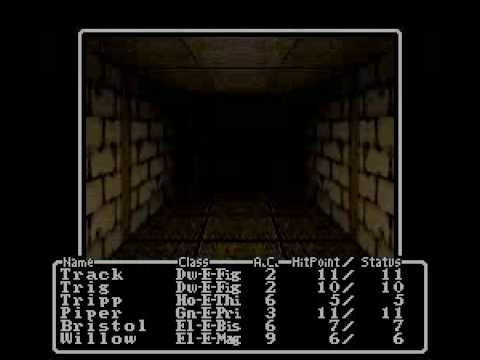
Legend of Grimrock is an indie game that I’ve found is closest to actually emulating the feel of the original Wizardry games from an aesthetic perspective while updating them for modern graphics; most of the examples from recent history are Japanese and feature anime-style character designs, with Etrian Odyssey being perhaps the best-known (and best-selling).
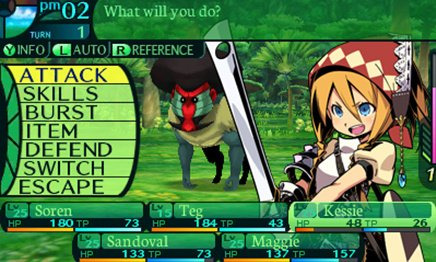
I describe my affection for DRPGs as “odd,” because few other games have the ability to thoroughly captivate me for the time I’m playing, only for me to completely forget everything about them when I’m done playing them.
For example, I recently noticed that Demon Gaze 2 was on sale for 75% off in the Playstation store. I’m keen to try it out, since I enjoyed the first Demon Gaze game so much that I took the time to 100% (I earned the “platinum trophy” so that anyone on my Playstation Network friends list can see the evidence of my achievement). This is a task that reportedly takes around 50 hours. I say “reportedly” because it’s based on other people’s reports of how long it took for them to “platinum” the game; I can’t really recall from memory how much time I spent playing that game, or really anything else about it for that matter.
I cannot express how weird it is for me to not have a memory of have any specific memories of playing a video game, especially one that I spent that amount of time playing. I can still vividly remember a specific game of Dota 2 that I played over half a decade ago. I could talk for paragraphs about an indie puzzle game that I played for 2 hours in 2012. You could ask me to talk about any of the N64 games I played as a middle schooler and I could probably recall many specific memories from the time I spent with those games.
And yet, when it comes to Demon Gaze, I remember nothing. Not the characters, not the plot, not any of the specific milieus or setpieces. And, truthfully, it’s probably because caring about any of these things is never really something that the game asked of me in the first place. I earnestly tried to remember anything I could about Demon Gaze, and here is a full, comprehensive list of what I came up with:
There’s an NPC whose character trait is that she’s always sleepy. I think she lived in the basement of...something. I think your “home base” was an inn, and she lived in the inn’s basement, and you would sometimes have to talk to her to do certain things or something.
One of the levels had plants and was mostly green. Maybe multiple levels, actually. I want to assume this meant there was a hedge maze, but I’m not actually remembering a hedge maze; I’m just assuming that a dungeon-crawling game plus a green area must mean there was a hedge maze.
One of the levels involved climbing a tall tower, or maybe descending into a deep pit. There was definitely verticality involved, and the map was cylindrical.
I think the main character used swords. But maybe they didn’t. I’m pretty sure that you could dual-wield at a certain point in the game. (I think part of what made the main character so strong was the fact that they could equip an artifact that let them dual-wield?)
That is truthfully and honestly the full extent of what I remembered about the game before I started writing this post and digging up screenshots which reminded me of the main character’s heterochromia. When grabbing screenshots for this post, I found one that showed a character’s class as being “Paladin,” and my reaction was not, “Oh yeah, Paladin was totally a character class in this game,” but “Oh yeah, Paladin totally sounds like a character class that could plausibly be in this game.”
Normally, I’d have memories of specific boss battles, or setpieces, or characters, or story moments. But in place of those, I have memories of looking at Google Sheets that people had made to list all of the items that dropped from certain areas, and ranked them to let you know which items were the best. I could more vividly tell you the decor of the room I was in when I unlocked the platinum trophy than the final boss I beat (or item I obtained) to unlock it. (Being a game for a portable system like the Vita, I actually have memories of many locations and “setpieces” associated with that game; just not locations in the game.)
DRPGs are, maybe more than any genre, a game that is experienced through a layer of abstraction, and I think this is best illustrated by the Etrian Odyssey, which lives in the DS family of systems, which are notable for having two screens (as is suggested by the name “Dual Screen”). Here’s a screenshot that shows what the game displays on both screens when you’re dungeon crawling:
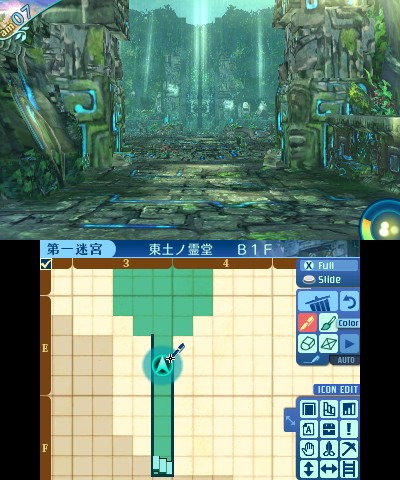
On the top screen, you see the environment you’re exploring in all its 3D-rendered detail. On the bottom screen, you have a map of the area you’re navigating, with the arrow in the middle indicating your current position and orientation. And for the vast, vast majority of dungeon crawling, my attention is focused solely on the bottom screen.
This is, I gather, how most people play DRPGs. Etrian Odyssey puts even more of the focus on the bottom screen by forcing you to draw the map as you walk (hence the bevy of icons and paintbrushes it offers you when filling in the grid). If you try to play by looking at the environment, you’ll quickly realize how much of the area is just copy-pasted assets that are difficult to navigate by. The map isn’t just a “guide;” the game feels less like a first-person dungeon crawler and more like game with a top-down POV where your avatar is represented by that arrow on the map. If you watch gameplay videos and only pay attention to the top screen, you’ll be blown away by how fast it seems like people are moving, but it makes a lot more sense when you realize that people are only paying attention to the map: people will see, “okay, I want to walk north 5 tiles, turn 90 degrees left, then walk west 2 tiles,” and then just input that series of actions faster than the walking animation can actually play out on screen.
I’m half convinced that the reason Etrian Odyssey took off more than any other DRPG is that, due to being on the DS, it has an entire screen dedicated to the map, whereas in a game like Demon Gaze, your screen is mostly taken up with what amounts to decorative filler while the part of your brain that’s focused on gameplay has to focus on a mini-map in the corner of the screen:

So, perhaps you can understand how it is that I played this game for 50 hours, yet have no recollection of the scene/location depicted in this screenshot. It’s because close to 100% of my focus was on the mini-map. I experienced most of this game as an abstraction.
There’s a real sense in which DRPG players (I’m talking about myself here) want everything in the game to be an abstraction. The ideal length for a combat animation is “as long as it takes for me to read how much damage the attack did, so please just advance the battle as fast as I’m pressing the X button.”
Video games are inherently abstractions of real things, like the way that adding the pyramids to my build queue in Civilization V is an abstraction of what it’s actually like to build the pyramids in ancient Egypt, or left clicking in Counter-Strike is an abstraction of what it’s like to fire a gun, but they usually try to call back to the things that they’re abstractions of. Civilization gives you an inspiring quote from some historian describing the pyramids, and Counter-Strike tries to have animations and sounds that somewhat reflect the behavior of real guns. But in DRPGs, I don’t want the combat to be the simulation of my character swinging a sword on an enemy. All I care about is watching the numbers flash on screen, and the reward isn’t “you’ve triumphed over this vile forest-dwelling enemy,” it’s “the number on your exp meter went up.”
While games like World of Warcraft eventually become like this for a lot of people (a game with a hundred buttons that is all about managing cooldowns), you at least start from a place of walking your avatar around the world and performing actions that make your wizard look as though you’re casting a spell. But most DRPGs start from the position of “all you care about is the numbers, right?” The game is an abstraction unto itself. It is a game that is made for people who like looking at spreadsheets (and I most definitely spent a decent chunk of time looking at spreadsheets).
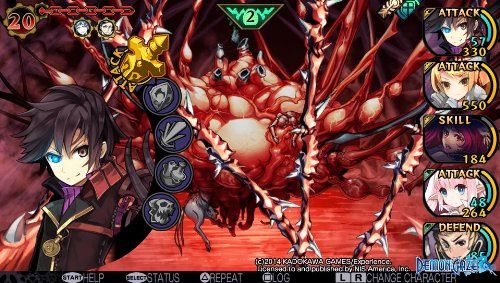
Maybe that’s why they can get away with having character designs often clash with the art style of the environment and enemies, and sometimes with the art style of other party members. Several of the character portraits in the above screenshot seem like they were drawn by different people, and there are some moments that, when you look at them in a screenshot gallery, make you think that the characters just don’t belong in the world they’re inhabiting. And while the game is sometimes visually non-cohesive in a way that becomes really obvious if you pay attention, the truth is that when you’re actually playing the game, you’re not really paying attention to all that.
For another example of this, I like to turn to Stranger of Sword City, which has a really cool aesthetic that hits you from the moment you pick up the box (or look at the title screen):
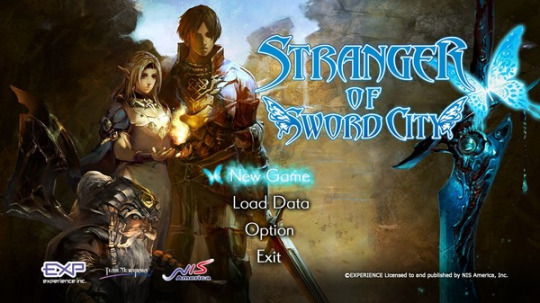
The original release of the game, on Xbox 360, was remarkably consistent with this specific style. But the Playstation Vita version of the game (which was later ported to PC) gives you an updated character creator and your options include, well, a variety of options drawn in a variety of different styles.
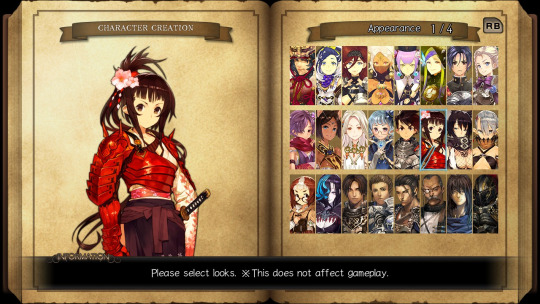
I just looked at the screenshots on the Steam store page for the Stranger of Sword City and, well:
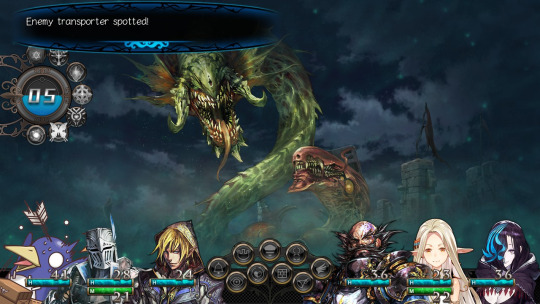
Yes, that is a Prinny in the bottom left corner. Yes, Nippon Ichi did publish this game, why do you ask?
I think one of the reasons I don’t tremendously mind the aesthetic choice (or is it a lack of choice?) in a lot of DRPGs like this to randomly have anime-style characters (even when they might be dissonant with the rest of what’s on screen) that I don’t necessarily need my paladin’s look to really communicate that they’re a holy warrior or whatever; I really just want them to be eye candy that I can appreciate in the moments when I’m distracted from the numbers. But in the end, it doesn’t actually matter that much, because, well...
DRPGs feel like they are all about function over form. (The “looking at the mini-map and not the 3D environment” is a microcosm of a playstyle that’s encouraged by a design philosophy that seems to apply to nearly everything in a “good” DRPG.) This puts them in stark contrast to, say, Persona, which involves a ton of dungeon crawling, but relies heavily on the style (which includes the battle music, the stylish combat animations, and the quips that your characters make in battle) to make that part of the game interesting.
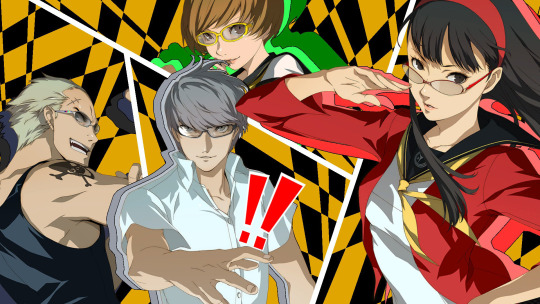
When you down all of the enemies in Persona, part of the “reward” for that comes from getting to deal a bunch of damage to all of the enemies, but a huge part of the reward also comes from the feeling of visceral pleasure that comes in the moment when Akihiko senpai says “I’ve been waiting for this!” and you smile and agree and say, “Me too, Aki. Now give me that shot that’s so iconic it became a meme template.”
I probably would not have made it through dozens of hours of crawling through Tartarus in Persona 3 if Mass Destruction weren’t such a banger of a battle theme. But I spent just as much (if not more) time dungeon crawling in Demon Gaze despite not having Lotus Juice’s rap verses soothing my ears during those battles, which I guess maybe stands as a testament to how good Demon Gaze was at making the game fun?
Ultimately, the abstraction that every RPG leveling system gets toward is “your character gets stronger.” Maybe DRPGs are better than any other genre at removing any abstractions that would serve as a barrier between you and that goal. And the best DRPGs also give you formidable challenges that give you ample reason to want to become stronger: games like Etrian Odyssey are notorious for their difficulty. I feel the difficulty is a bit overhyped; much like my feelings on Dark Souls, Etrian Odyssey only really feels “hard” when compared with other games where the player is never put plausibly close to a failure state whereas Dark Souls and EO actually punish the player for making mistakes, and EO also has the “X-factor” of having enough variance (due to things like random crits) that you actually do want to give yourself a decent margin for error. Which is to say, EO is one of the RPGs where you actually care a lot about having a team that’s strong enough to kill a boss in 8 turns instead of 10 turns, since that’s 20% fewer chances for an unfortunate event to send you back to home base. Powering up your team in EO feels important and significant way more than it does in a lot of other JRPGs.
There is a very real sense in which the entire point of the obligatory spreadsheet companion is to aid you in your quest to become the strongest you can be by breaking the game somehow. The thing I do remember about Demon Gaze (not concretely, but in the abstract) was that there were some item/class combinations that were wildly better than the alternatives. Some might deride this as poor balance, but in my eyes, “breaking” a game in that way is really more akin to “solving” it, in the same way that one might “solve” a puzzle. I did it: I found right combination of skills and items to trivialize the game’s difficulty! Huzzah! In a “well-balanced” game where all items and classes were all carefully tuned to be equally viable, such a thing would not be possible. Thus, what others might consider “poor balance” in some DRPGs is actually an essential and core part of what compels me to spend time with those games.
I feel like these factors and more make DRPGs somewhat unique in a way that probably contributes to them reviewing poorly. For example, if you look among discussions on DRPG forums about recommended games, there seems to be universal consensus that Stranger of Sword City is a great game (with many praising it as the best DRPG they’ve ever played), but on OpenCritic, only 45% of critics recommend it, and I think all of this is perfectly encapsulated by a 6/10 review from TheSixthAxis:
Stranger of Sword City excels at one thing, and really flounders at the others. It’s a rewarding experience if you’re a fan of challenging RPGs and gameplay depth. If you’re a fan of well-written dialogue, engaging music or proper difficulty curves though…well….there are a lot of other video games out there that may suit you better.
And that’s the kind of thing that makes me want to locate a guide, crack open a spreadsheet, and start a new save file.
Anyway, the Stranger of Sword City is on sale for 80% on Steam right now. That’s $4, for a game that I paid $40 for when it first came out on Vita! I’m tempted to buy it again, just for the convenience of being able to play it on my monitor without having to dig around to locate my old Vita TV.
22 notes
·
View notes